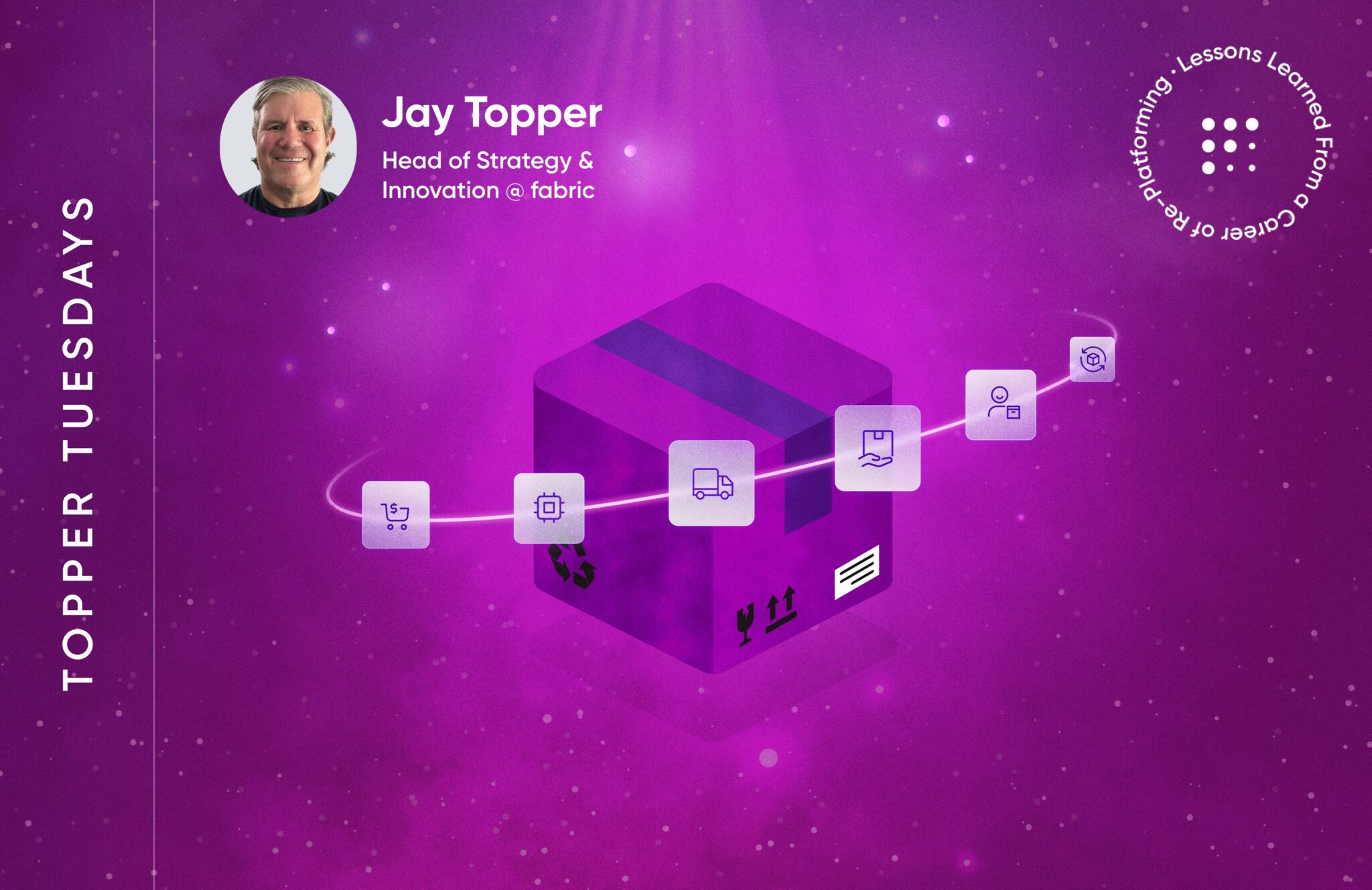The Order: Why It’s the Center of the Commerce Universe

The “order” is magical! It’s the point in time, at the cart or cash register, when the customer makes a financial commitment to the company. She has put her TRUST with you, and now it’s up to you to deliver.
Delivering on the customer’s trust doesn’t end with the order — it starts with the order. And, more and more, the order is the foundation for doing amazing things to meet and surpass customer expectations. That’s why I believe the order is the “heartbeat” of the entire commerce experience.
With such high expectations based on the order, considering your order management system (OMS) during a replatform, and whether to change it or not, is super prudent.
Let’s dive in!
OMS vs. DOM?
Anyone who has worked in retail understands the order. Each and every order is a customer — in the strictest definition of becoming part of your customer file. In being customer-centric, it’s a recognition for your brand, and even a humbling experience, to know that the order, while it may be one of the thousands for you, is one of one for the customer.
If the order is the point in time when customer puts their trust in you, the burden to deliver on your brand promise reaches its crescendo!
It’s funny that we spend countless hours fine-tuning carts, some percent of which never turn into orders. But the order is maturing in importance, and the activities around it are accelerating to meet customers’ wants, needs and demands.
There is a wave of discussions around OMS and distributed order management (DOM) that simply weren’t here to this extent 5 or more years ago, but the basics are the same. But first, let’s define these terms.
What is an OMS? IBM defines OMS as “a digital way to manage the lifecycle of an order. It tracks all the information and processes, including order entry, inventory management, fulfillment, and after-sales service.”
This sounds nearly perfect to me.
What is a DOM? Gartner defines DOM as software used to “orchestrate the fulfillment of customer orders placed through a retailer’s online channel.” This should also include in-store fulfillment applications.
What do retailers need?
There are debates in the market about whether a company needs an OMS. Well, first of all, everyone who functionally manages the order and has one or more systems performing those functions. Oftentimes, it’s the ERP or sometimes rudimentary functionality within the commerce platform. Secondly, don’t let a vendor tell you what you need or don’t need. Understand your order lifecycle, the functions, systems and data that either support the order (or the order supports them) and your consumer vision. From there, as you compile pain points and opportunities, it will become clear when you need an OMS and/or DOM.
One thing to consider is how the maturation of the order takes place. We’re starting to see more attention placed on setting configurations to manage the order. And, like product catalog, pricing & promotion and inventory, at some point in your growth, looking into composable, configurable and API-ready systems makes sense.
In other words, the order is not as stagnant as it used to be! Here is where the conversations around orders are focused:
- The order is showing up in the purchasing flow more than ever to answer questions like which products are available, where do I ship them from, where do I send them (including BOPIS), and what delivery date can I commit to the customer.
- The post-order process has become strategic. Retailers expect to be able to track orders in newer platforms that tie into DCs and carriers proactively. notifying customers of their order’s journey
- The order is a foundation for offering ancillary products in the purchase flow (current and future).
- The “omni” order is front and center. Separate OMSs or processes for store orders, clienteling, social selling, call centers and traditional e-commerce orders need to be in the same place to offer agents and others a 360-degree view of the customer’s purchase history.
- The complexity of order routing to stores, DCs or third-parties coupled with destination points. That’s not just homes, but home parties, selling shows (think fashion) and other yet-to-be-defined use cases.
A tale of pain
Not long ago, I served as CDO for a popular retailer. In July or August, we wanted to get our Walmart same-day delivery live before our peak season. So, we approached our DOM provider (where this should naturally occur).
The amount of time to scope (60 days) and deliver (sometime in the following year) a solution was mind-boggling to us. We ended up “hacking” our OMS to bypass DOM, finished it in two sprints and away we went. But it was suboptimal and created more technical debt for our teams.
We vowed then to look at OMS and DOM together and strategically as a service so we could extend to meet our customers’ needs, with speed!
Reasons to consider an OMS
My experience with both OMS and DOM systems has led me to champion OMS in most cases. Here are situations where you should consider OMS, too:
- Your current platform is big and expensive. Having OMS within ERP is counter-intuitive, or can be. ERPs are not simple, and they are expensive to maintain. Customizations are generally not best practices.
- Your omnichannel fulfillment and/or customer service are becoming suboptimal. As discussed above, looking at a customer holistically and ensuring an accurate, consistent and seamless experience is table stakes.
- Your fulfillment network has become complex from adding DCs, stores, and more that require a view of inventory across the entire network and intelligent, configurable routing logic.
- You’re finding it difficult to flex your current e-commerce platform. You could have an OMS embedded in your e-commerce system, but it’s either too clunky to manipulate or too immature to handle desired customer experiences.
- Your growing needs include data centricity and control. Data from the order is as important as data to the order. Customer information, product information, pricing/margin information and customer preferences — this data isn’t just to look back, it’s needed to bend current and future experiences to meet individuals’ happy-path personalization!
- You need a first step in replacing the monolith. It could be the OMS you embrace as an incremental step toward replatforming. If you are on a big, inflexible monolith that you NEED to be flexible, you could start with an OMS (or a product catalog). I like starting with the OMS because, when you get that right and financially reconciled, putting the pieces around it becomes that much simpler.
Shameless but genuine plug
There are not many native OMS or DOM solutions out there, but you can find one easily enough. I selected fabric after experiencing the amount of effort it took to build an OMS at my former company. fabric’s roadmap was exactly what we were looking for, and our trust proved worthy. fabric became the backbone of the retailer’s commerce platform.
fabric’s OMS and DOM platform is modular in that connecting it to and from neighboring platforms is far simpler. It also integrates seamlessly into our other commerce modules, and focuses on configuration versus your need to have a heavy development organization to make routine changes.
Read my previous post for a deeper explanation on composable commerce.
fabric OMS is the modern way to commerce
In the commerce lifecycle, the order is the heartbeat of the system. It touches everything from payments and tax, to shipping and customer service, to delivery and more. And yet, fabric’s founders realized there were no available solutions that connected the shopping experience to the order.
fabric fills the gap as the industry’s first commerce platform with native OMS that allows retailers to manage the entire order lifecycle. It was launched with a design partner during the holidays and announced at NRF 2024. To date, fabric has processed over a million orders, and now ingests over 5 million orders and is approaching $200 million in gross merchandise value (GMV) this month, and growing daily. This showcases the success of the system and its embrace by customers.
fabric for real-time order fulfillment logic
Our next-generation, real-time order fulfillment logic is now generally available in fabric OMS.
What does that mean for retailers? According to NewStore’s 2023 Omnichannel Leadership Report, only 31% of retail websites show accurate and up-to-date information about store inventory. This places a huge strain on the customer experience and brand loyalty, and there isn’t a retailer out there today who isn’t trying to improve inventory accuracy.
fabric makes order fulfillment easy with:
- Real-time Inventory: Delivers world-class e-commerce experiences out of the box like “Shop the Store” . Plus, never miss a sale with omnichannel inventory services built on fabric’s Open APIs that provide an accurate inventory view across your entire network of stores and warehouses.
- Order Routing: Allows your teams to configure distributed order management logic with best-in-class native order routing rules and without writing any code. fabric Copilot also provides an easy to use UI for operators.
- Custom Alerting: See anomalies before they become problems with highly flexible alerting rules configured in fabric Copilot. These alerts notify operations and technology teams via email so they can view all orders related to alerts from an intuitive dashboard in the fabric UI.
- Omnichannel Fulfillment: Our Store Associate application (available on the web or in an iOS app) gives store associates a better, more efficient experience when shipping from store. Finally, an app built with store associates in mind!
To learn more about fabric DOM, visit …

Next up: How to present (or sell!) your replatform!
One way or another, you or someone in your enterprise will seek approval or to explain why you are initiating a replatform. While this entire series is geared towards you, the next post will cover:
- ROI conversations: remind people of the “why” as quantitatively as possible.
- Risks: always have a biggest, mitigate it and find the next.
- Bring forward your business understanding of your selection: architecture matters!
- The philosophy of incrementality.
- Cost and timeline discussions and expectations: how to budget time and money.
Toppers Tips & Tricks: OMS is the heartbeat of commerce!
- Understand your complete order lifecycle and internal / external pain points from the shopping experience through all post-purchase activities.
- Explore the market to understand how peer companies manage this lifecycle to see the art of the possible. Remember, fabric can help!
- Focus not just on customer experience, but employee experience, too. The ease at which employees can configure software platforms and make quick pivots on everything from pricing to product catalog, from OMS to DOM, can be game-changing.
- As with other tips and tricks I have provided, talk to the product managers and owners of potential solutions — the builders — to get an idea of the functionality and technology behind it.

Advisor @ fabric